We all make mistakes, and when it comes to writing with a pencil, the trusty eraser is always there to help fix them. But have you ever wondered how this little tool works? Let’s explore the science behind erasers and find out how they can make those pencil marks disappear!
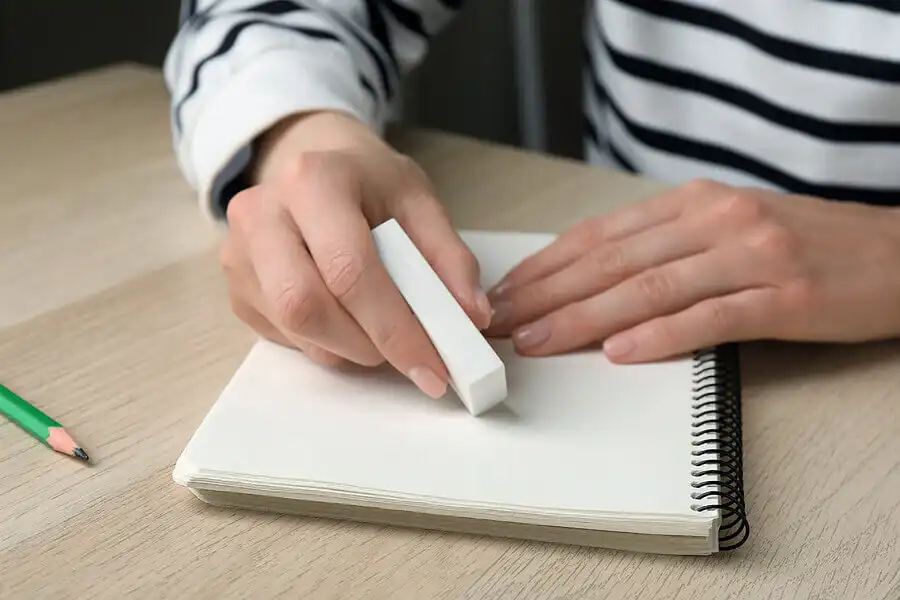
What Exactly is Pencil “Lead”?
Before understanding how an eraser works, it’s essential to know what we are erasing. Although we often refer to the core of a pencil as “lead,” it isn’t made of the heavy metal lead. Instead, it’s made of a mineral called graphite. Graphite is a form of carbon that’s layered together, and when you write with a pencil, tiny particles of graphite are transferred onto the paper. The marks we make with a pencil are just these small bits of graphite sticking to the paper’s fibres.

A Quick History of Erasers
People didn’t always use erasers to remove pencil marks. Long before erasers were invented, people used something surprising – bread! Yes, you read that right. Before the modern eraser, bits of white bread were rolled into small balls and used to rub off pencil marks. However, in 1770, an English engineer named Edward Nairne accidentally picked up a piece of rubber instead of bread and discovered that it worked even better for erasing pencil marks. This is why, in the UK, erasers are often called rubbers because of their original material.

How Does an Eraser Work?
Now, let’s get to the science of it! When you write with a pencil, the graphite particles stick to the paper. An eraser removes these particles by friction. When you rub an eraser on the paper, it creates heat due to the friction. This heat helps to loosen the graphite particles from the paper. At the same time, the eraser, which is usually made from rubber or synthetic materials, grips onto the graphite particles, lifting them off the paper.

As you continue rubbing, the graphite particles mix with the rubber, forming the small eraser shavings you brush away. These little bits are called eraser crumbs, essentially the graphite and rubber combined. This process is called abrasion, where one material (the eraser) wears down another material (the graphite) and removes it from the surface.

Why Don’t Erasers Damage the Paper?
Erasers work well on pencil marks because they are soft and gentle enough not to tear the paper. If an eraser were too rough, it could damage the paper’s surface. Most erasers contain softeners like vegetable oil, making them flexible and reducing the tearing risk. The soft texture allows them to remove the pencil marks while keeping the paper intact.

Some erasers are made from vinyl or plastic, which are even gentler on paper. Vinyl erasers, for example, are often white and are known for their ability to clean pencil marks without leaving any stains or damaging the paper.
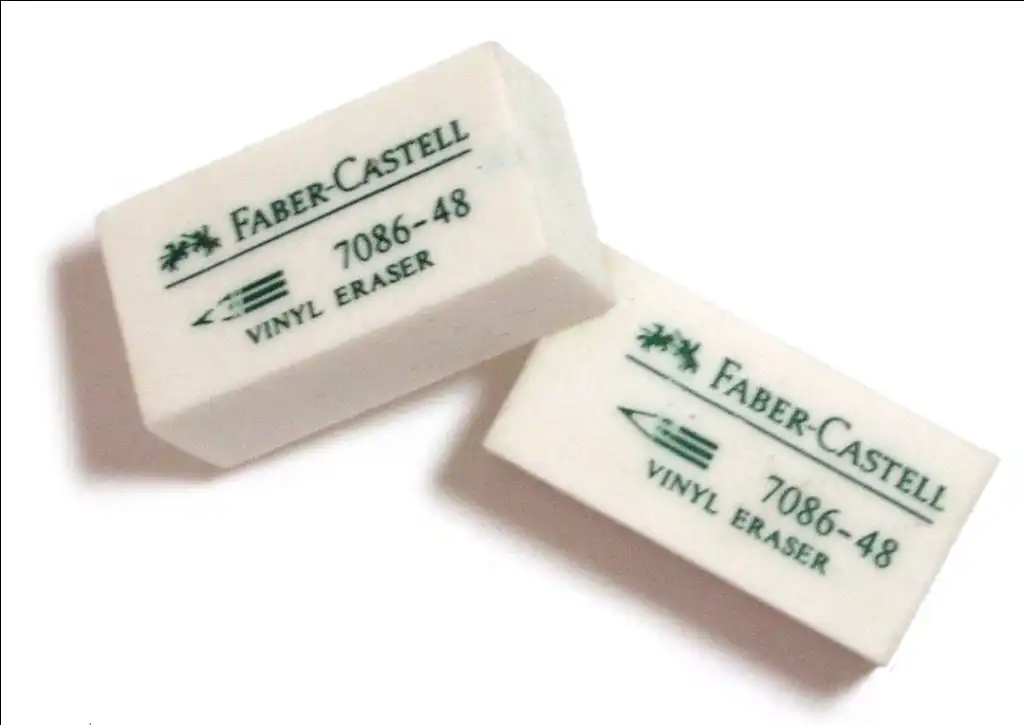
Why Can’t Erasers Remove Ink?
While erasers work wonders on pencil marks, they are generally ineffective on ink. This is because graphite from pencils sits on the paper’s surface, making it easier to remove. In contrast, the ink gets absorbed into the fibres of the paper, sinking deeper into it. Because of this, rubbing the surface of the paper with an eraser isn’t enough to lift the ink out. Removing ink usually requires a more abrasive method, but this can easily damage the paper.

Different Types of Erasers
Erasers have evolved, and now there are different types suited for different tasks:
- Rubber Erasers: These are the most common and are often attached to the end of pencils. Made from synthetic rubber, they are perfect for everyday use.
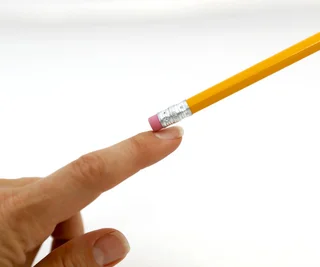
- Vinyl Erasers: These are typically white and are much gentler on paper. Vinyl erasers are ideal for delicate paper and leave fewer crumbs.

- Kneaded Erasers: These are soft and can be shaped by hand. They are often used by artists because they can be moulded to erase specific areas without affecting the surrounding work.

- Pencil-Top Erasers: These small erasers fit on the top of a pencil and are handy for quick corrections.
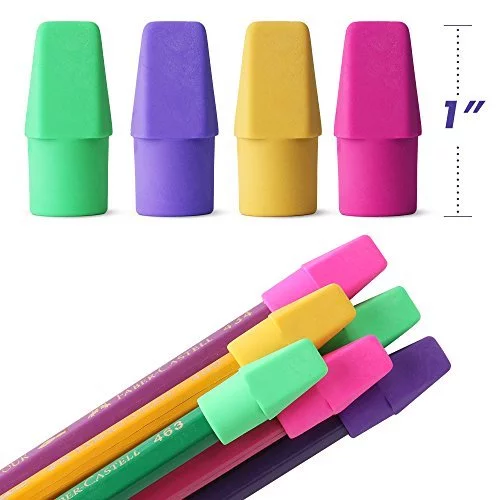
- Electric Erasers: Yes, there are even electric erasers! These are powered by batteries and are often used by professionals like architects and artists to erase precise areas quickly.

Why Are Erasers Pink?
Have you ever noticed that many erasers are pink? The reason behind this goes back to the early days of erasers. The first synthetic rubber erasers were made with a pink dye, and they became so popular that pink became the traditional eraser colour. Today, even though erasers are made from a variety of materials, the pink colour remains a common choice because it’s familiar to many people.

The Environmental Impact of Erasers
While erasers are incredibly useful, it’s important to think about their environmental impact. Many erasers today are made from synthetic materials like vinyl, which are not biodegradable. Additionally, some erasers contain phthalates, which are chemicals that can be harmful to the environment. As we become more aware of these issues, manufacturers are working on creating more eco-friendly erasers made from natural or biodegradable materials.
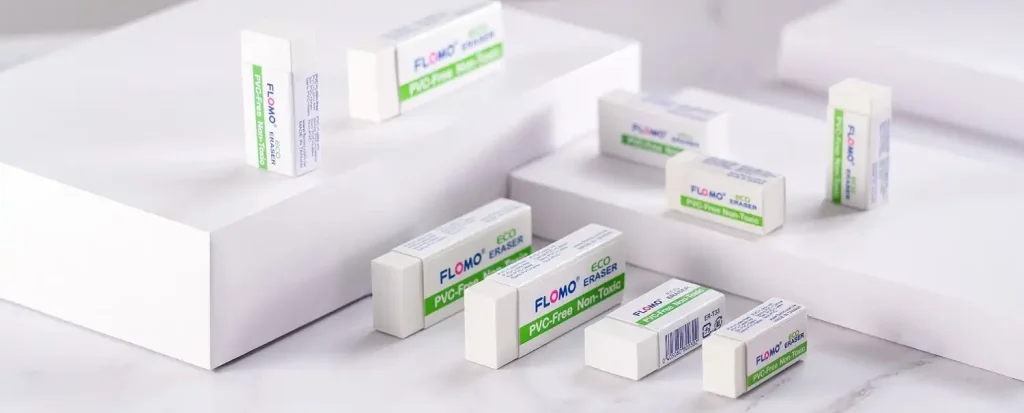
Fun Facts About Erasers
- The largest eraser ever made weighed over 2,000 kg! It was created in 2003 and was about 8 feet long.
- Some erasers are scented to make them more appealing, like those that smell like fruit or candy.
- The kneaded eraser, popular among artists, doesn’t leave behind any crumbs because it picks up the graphite without shedding.
Conclusion
The next time you use an eraser to fix a mistake, you’ll know that there’s a lot more going on than meets the eye! Erasers work through friction, heat, and the magic of rubber to lift graphite off the paper, keeping your writing and drawings neat. From bread to vinyl, erasers have come a long way, and they remain a simple yet ingenious tool that helps us correct our mistakes.
For more interesting articles, please visit www.kidzherald.com





